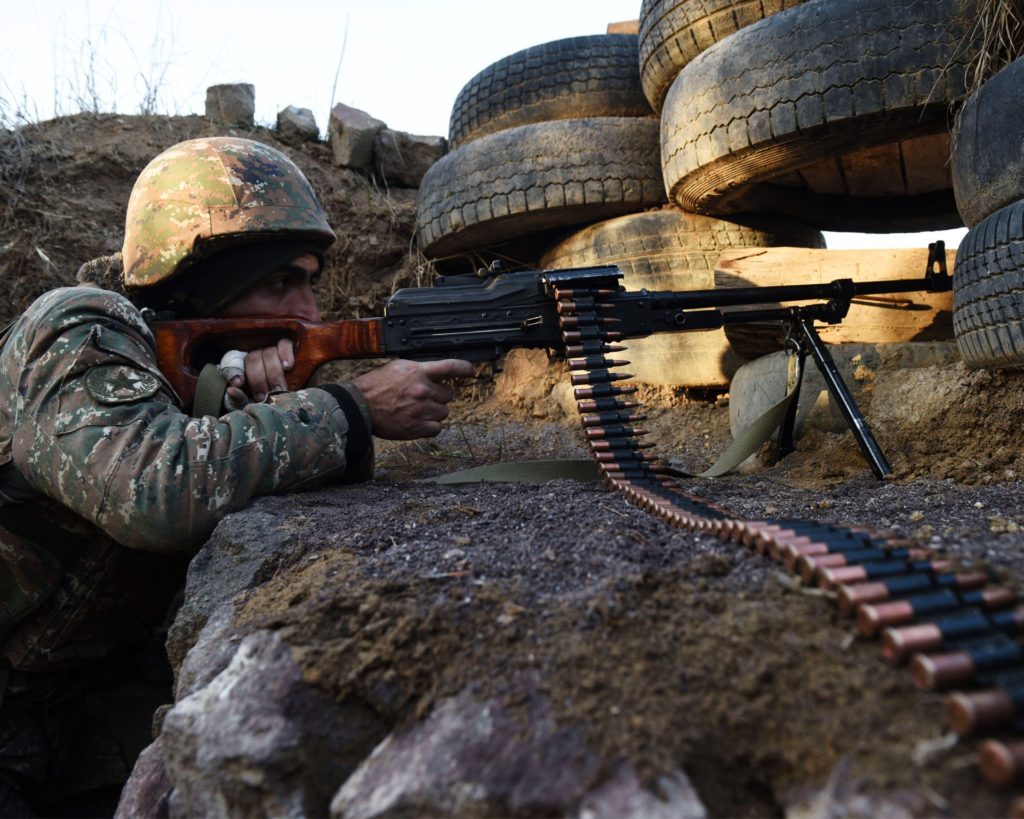
The tensions over the Nagorno-Karabakh status quickly escalated in April and a full-scale conflict between Armenia and Azerbaijan seemed nearly inevitable. The fighting outbreak was the largest since the Bishkek Protocol ceasefire of 1994 and threatened to dismantle the longstanding frozen status of the conflict. However, the situation has now “normalized.”
Moscow has succeeded again in “cooling down” the ethnic jingoism on both sides. The fighting outbreak has indicated that despite the growing Turkish presence, the Kremlin still exercises a dominant influence over both Azerbaijani and Armenian elites and is able to impose its will in critical moments.
Despite the bombastic statements from both sides, as well as the Armenian readiness to declare the Nagorno-Karabakh’s independence, the Kremlin easily lobbied for a ceasefire days after the fighting outbreak. Moscow has also played a major role in arranging the Armenian and Azerbaijani presidents meeting in Vienna on May 17. The meeting was a mere formality, but it highlighted the Kremlin’s dominance in the Southern Caucasus to the entire world. Therefore, the paradigm of a frozen conflict in this region endures: as long as the Kremlin does not want war—it will not take place.
Both Baku and Yerevan acknowledge that Moscow would not allow provocations from reaching a tipping point and utilize all of its available leverages to halt any outbreaks. However, Ankara’s increasing support, as well as the growing military power of Baku is pushing the Azeri side to act beyond the accepted frameworks and with strong public backing.
Over the years, the return of the Nagorno-Karabakh region has acquired a sacral status within Azerbaijan. The “occupation” of Azeri land has become a trump card for any politician willing to boost its popularity with populism and one of the key pillars behind the post-Soviet identity reconstruction. Indeed, Azerbaijan does not hold any trust into the Minsk Group’s ability in resolving the Nagorno-Karabakh clause.
Baku is experiencing a growing support from Ankara, as relations with Russia worsened after the downing of the Russian Su-24. The Azeri elites are, likewise, confident in their country’s military superiority in comparison to Yerevan, boasting top-notch equipment, including the new Israeli suicide drones. The alarming scale of the current fighting outbreak and Azerbaijani “trophy” of 800 hectares of land, highlights that Baku will only grow more aggressive and harder to pacify.
The Kremlin wants to avoid another conflict by any cost and is even willing to pass certain concessions. Moscow hopes they might facilitate a temporary containment and this is why it has agreed to give up the captured territories this time. However, the Azeri appetite is only augmenting and Moscow should consider a new framework in order to avoid a full-scale conflict on its Southern borders in the future.
The Kremlin realizes the inevitability of a new agreement but hopes to postpone its arrival until the last moment, and until things turn too ugly between Armenia and Azerbaijan. The new framework could impinge certain aspects of Moscow’s dominance and, likely, elevate the Turkish status within the region. Therefore, the frozen conflict will continue to flare up, reaching new levels of intensity and new land “trophies” for the Azeri troops again in the future.